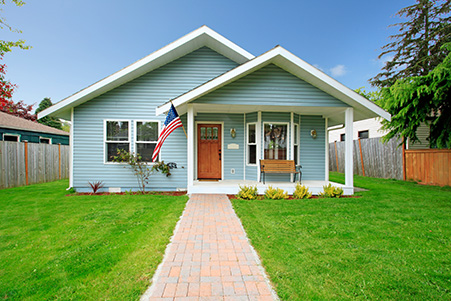What is down payment assistance and how to qualify for DPA
In these tough economic times, the dream of home ownership may feel unattainable. With mortgage interest rates shooting up to over six percent for a 30-year conventional loan, homes cost more now than they have in years. Add this to the high home prices we’ve seen throughout the country due to inflation and the prospect of homeownership for those entering the market can seem bleak.
However, all hope is not lost. Programs exist to help individuals and families attain the goal of home ownership. Down payment assistance programs can help you get the home of your dreams at a price you can afford. In this article, we’ll discuss what you need to know about down payment assistance programs. We’re looking at what down payment assistance (DPA) programs are, how to qualify, and what options exist to help you turn your dream of home ownership into a reality.
Rising home prices and mortgage interest rates take a toll on homebuyers.
According to a report by the National Association of Realtors(Opens in a new window), the median price of a single-family home in the U.S. during Q1 of 2022 was $368,200. The median price of a starter home was not far off at $313,000.
Now consider a traditional down payment of 20 percent on a $313,000 starter home. Your average buyer would need to come up with $62,600 to meet this down payment requirement. Lower that percentage to 10 percent and you’re still looking at a lofty down payment of $31,300. Saving such a large amount of money is no easy feat for many families. This is where down payment assistance programs can come in to lift some of the burden.
What are down payment assistance programs?
Down payment assistance programs are systems that help prospective homeowners purchase a home without needing to save as much for their down payment.
These programs are usually state-sponsored and can take many forms, including grants, forgivable loans, deferred loans, and low-interest loans. We’ll get into more of these details below.
The programs are designed to help qualified home buyers who don’t qualify for zero-down payment loans and who may not have enough saved up for a traditional down payment. While the programs and requirements vary by state, you’ll find many of them share similar qualifications.
How to qualify for down payment assistance.
Many down payment assistance programs are targeted toward first-time homebuyers.. There are also DPA programs that exist for repeat buyers. as well.
Requirements for down payment assistance programs vary by state and sometimes even by zip code. While the exact numbers will vary, a program will likely have many of the following requirements:
- Minimum credit score, typically at least 620
- Maximum income level
- Need to invest some of your own money
- The requirement to purchase a home below a certain price point
- Participation in home buyer education classes
- Purchase of a certain type of home
Check your local programs for the exact requirements. If you meet these basic requirements and are otherwise qualified for a home mortgage loan, you will likely qualify for a down payment assistance program.
What types of down payment assistance programs are available?
As mentioned above, the most common types of down payment assistance programs include:
Grants: These are considered some of the most valuable DPA programs because you don’t have to pay anything back. The grant functions as a gift to your down payment. It’s important to be aware, that some grants may create a second lien on your home. A real estate lien prevents you from selling or mortgaging your home until the lien is paid. Ensure your mortgage lender is aware of the grant to avoid the risk of a “silent second mortgage.”
Forgivable Loans: These are zero percent interest second mortgages that you do not have to pay back if you stay in your home for the required number of years. Participating lenders will often forgive the loan after five years, but the required period could last as long as 20 years. Typically, this second mortgage is big enough to cover your entire down payment.
Deferred Loans: Like forgivable loans, these second mortgages typically cover the sum of your down payment. However, unlike a forgivable loan, you must pay a deferred loan back when you sell or refinance your home.
Low-Interest Loans: Another option is a low-interest loan on a second mortgage. These loans are paid back on a regular schedule and are not forgiven, but they can offer you a low or no interest rate.
Down Payment Assistance Programs Help You Get Into a New Home
While interest rates and home prices may be soaring, assistance is available for those who need it to help them make the dream of homeownership a reality. Guardian Mortgage currently participates in several state down payment assistance programs, as well as one nationwide program.
If you are interested in learning more about down payment assistance and whether you qualify, contact a Guardian Mortgage professional for more information.
CONTACT A LOAN EXPERT

